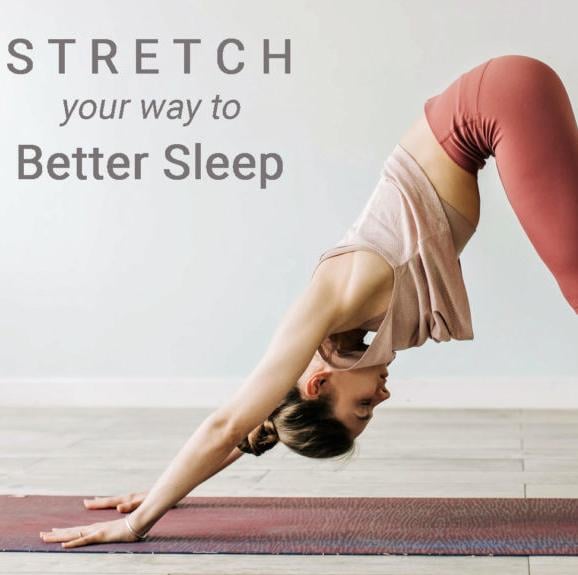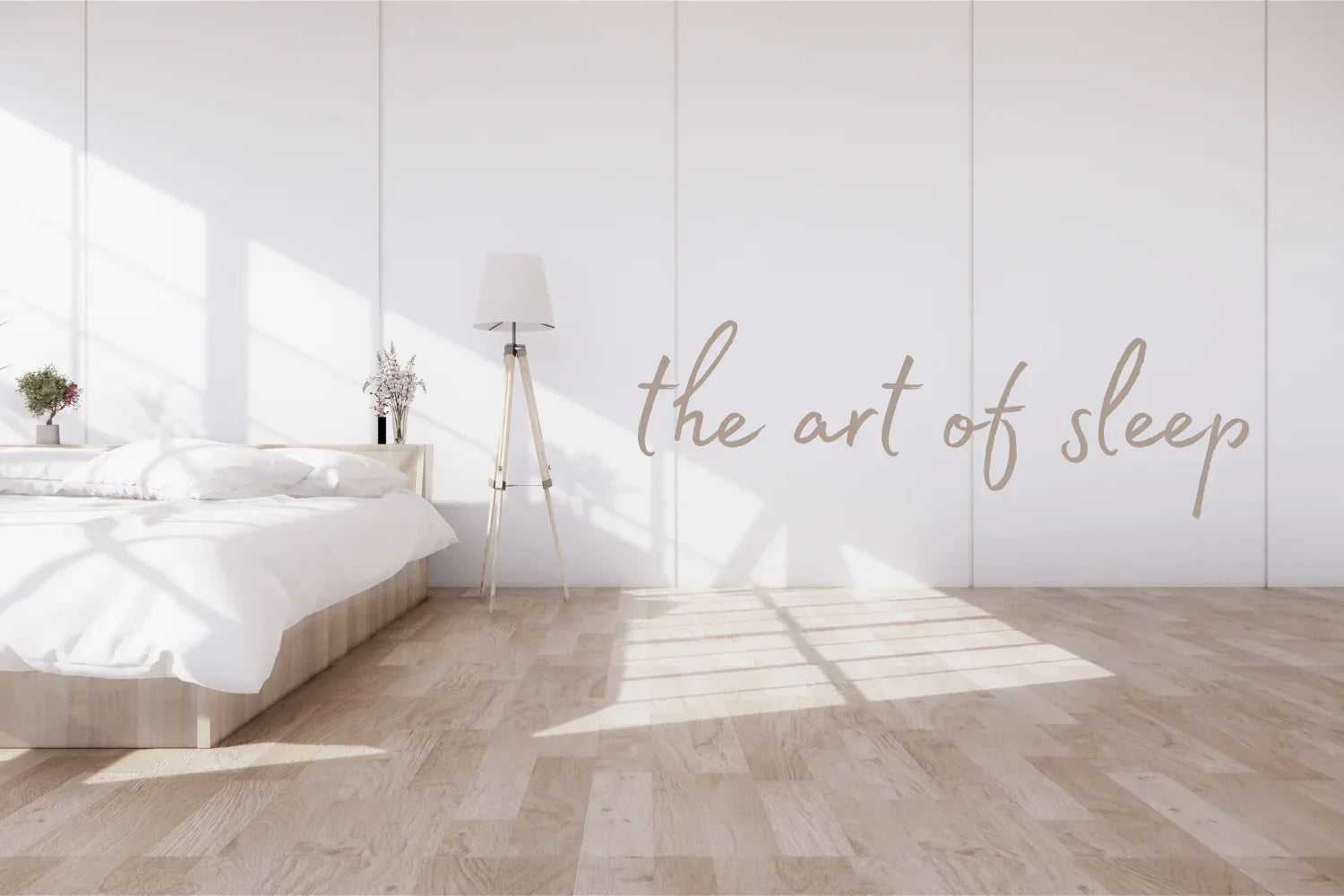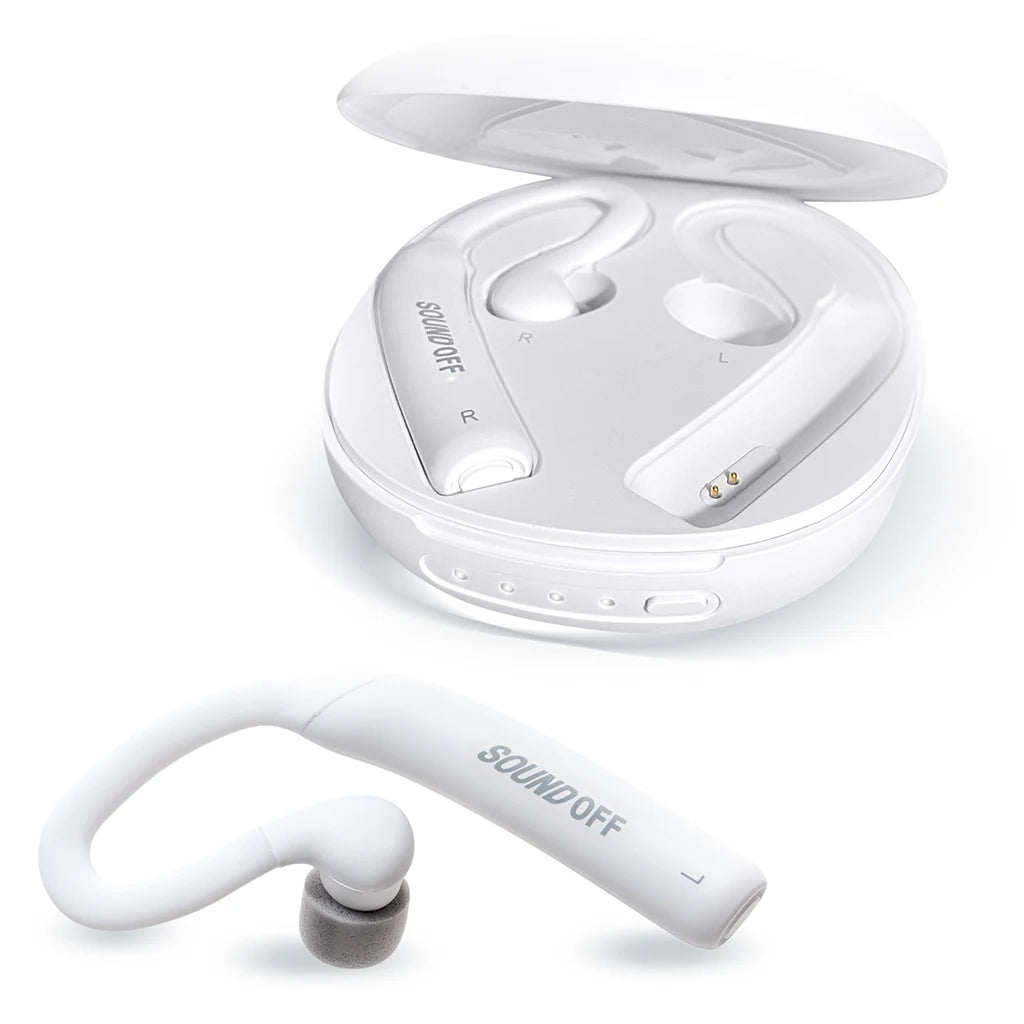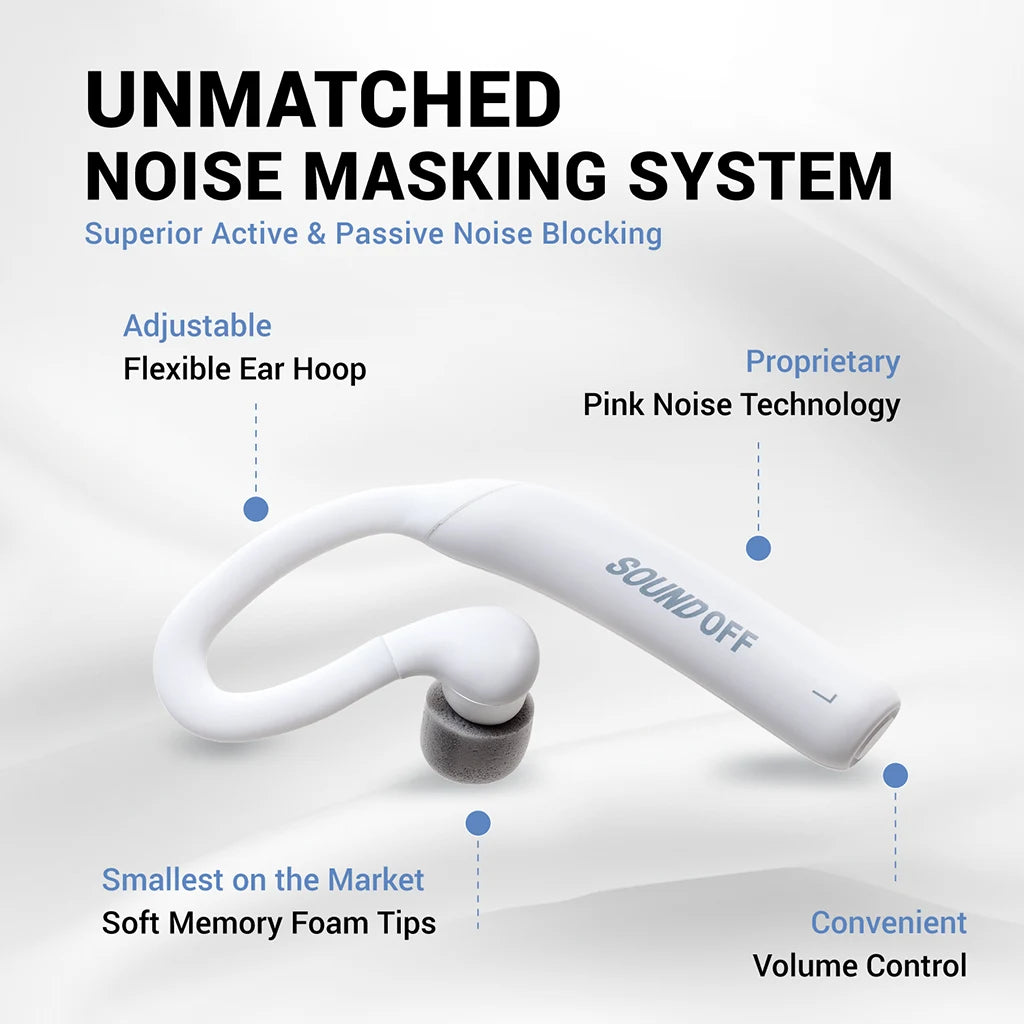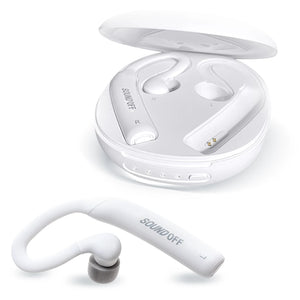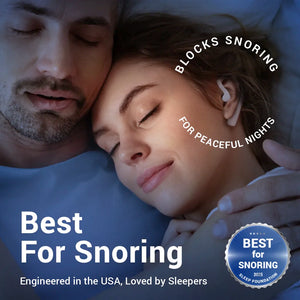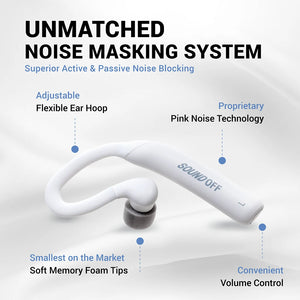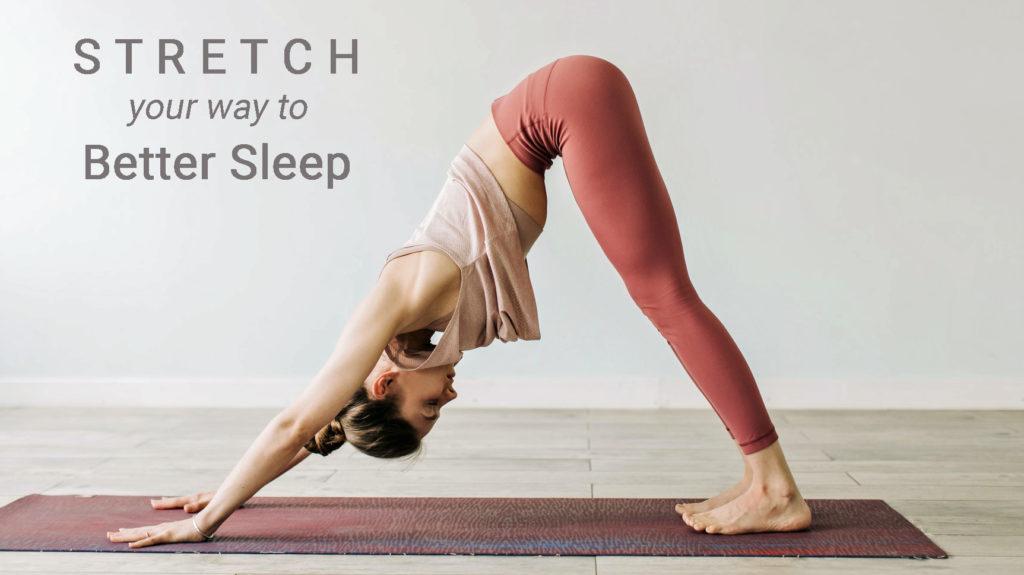
Practicing pre-bed stretches before turning in for the night will help to relax your body and mind so you can get better sleep.
Pre-Bed Stretches for Better Sleep
In our continuing quest for relaxing activities to help us get our shuteye, we’re taking a look at how Stretching can help you sleep better. Most recently we explored sensory methods to help you relax before bed: the Tea Ritual, and Relaxing Scents. Now it’s time to get physical with pre-bed stretches for better sleep. Pre-bed stretching loosens up your muscles and eases your mind so you can transition, stress-free, into a good night's sleep.
Practicing pre-bed stretches regularly is certain to calm your nerves and can definitely help you get to sleep faster and sleep better. Make it a part of your daily wind-down and you'll quickly see its rejuvenating benefits.
Try combining different tips from our Relaxation-focused posts to create a custom pre-bed ritual that will help you relax and get the sleep you deserve. Once you’ve found your relaxation groove, sleep will come easier, and your quality of sleep will improve.
Stress & Your Sleep
We’ve covered it before but it bears repeating; if you can’t get relaxed, you can’t get to sleep. This co-dependent relationship between stress and sleep-loss needs to be put to rest, and s-t-r-e-t-c-h-i-n-g is a great place to begin.
Pre-bed stretches aren’t just for better sleep; they’re a quick & easy way to start improving your overall fitness. Make them a part of your daily wind-down ritual and you can look forward to better nights—and better health!
What's the big deal about stretching?
Stretching, done correctly, works on your whole body. It provides both physical and mental benefits that help encourage relaxation. This helps transition your body from an anxious, knotted-up mess, into a calmer state—a big plus anytime of the day—but especially helpful when you need to sleep.
Psychological Boost
Research shows movement and exercise both prevent—and treat a number of physical and mental ailments; by boosting mood and focus. Stretch breaks are recommended by health experts to keep your mind—as well as your body, limber. Many psychologists also advocate “Brain breaks,” which are becoming increasingly popular for children (as well as their parents.) These pauses-in-the-routine are an important relaxation ritual. Make sure to regularly incorporate a set of stretching exercises in your breaks.
How stretching helps the brain
The muscle movement we use to stretch, helps connect different regions in the brain and nervous system, which keeps the mind more active and flexible. This assists children in developing social and motor skills—and gives adults a chance to re-focus their attention when things are chaotic.
Let’s face it, it’s easy to lose sight of self-care during our busy days. Taking only a few moments to stretch, is a quick and effective boost—and, it just… feels really good!
Physical Benefits
Anything that makes us less sedentary is good practice. As we know, being inactive for long periods of time sets us up for muscle and joint issues; and it doesn’t take long to develop those infirmities.
When you don’t stretch, your muscles become shorter, tighter, and weaker; which of course affects your range-of-motion. If your muscles are unable to fully extend, you’re more at risk for strain and pain—or even muscle damage.
A little stretching increases blood flow to the muscles and joints; so instead of being stiff, your muscles will be stronger, and more flexible. And, though it won’t cure chronic pain caused by stress; mild pain can actually be improved with regular stretching. Start loosening up with stretches today to feel younger as well as less stressed.
"You are only as young as your spine is flexible."
- Joseph Pilates
What else does stretching do?
Because it increases blood circulation and improves flexibility; stretching is able to combat many stress-related health issues. In addition to relieving anxiety and pain; stretching is also known for these important benefits:
- Allows Full Lung Expansion
- Improves Muscle Recovery
- Improves Posture
- Lowers Blood Pressure
- Reduces Fatigue
- Reduces Nocturnal Cramps
- Relieves Back Pain
- Triggers Digestion
Get ready for a steady supply of Relaxed & Happy
Why does it feel so good when you stretch? Endorphins! These are your body’s natural pain relievers and they also produce feelings of well-being. The endorphins released into the body when you stretch, act like neurotransmitters which produce a morphine-like effect—this diminishes pain—and in turn, reduces stress.
Stretch regularly to reap the feel-good benefits of a stronger body; a more flexible brain, and a lighter mood!
*Another way to release these feel-good chemicals? Trigger them easily by laughing more. Laughing is good for the body and soul. Laugh more; live better.

Go-ahead. Laugh out LOUD!
Try this to loosen-up emotionally…
It’s common knowledge that Yoga stretches are particularly helpful in reducing stress, and loosening muscle tension—but here’s a tip for when more than just your muscles are twisted up…
Laughter Yoga
In 1995, a Mumbai Family Physician discovered Laughing Yoga and introduced it to the world. Dr Madan Kataria promotes his "Laughing Yoga" to help elevate mood, reduce stress, increase energy, and strengthen immunity. This practice employs a series of physical and breathing exercises which encourage a simulated laughter response.
The premise is that simulated (forced) laughter, produces the same physical and psychological benefits one receives when spontaneously responding to something they find humorous. Does it really work? It must, because it’s growing in popularity.
Laughing Yoga is normally done in groups and has become so successful that “Laughter Coaches” are taking these hybrid yoga workshops on the road. Classes are popping up across the globe in corporate workplaces, senior community centers and college campuses.
Laughter is a great way to distance yourself from your cares for a moment—Laughter Yoga is also an enjoyable way to stay more connected with the world around you—consider giving it a try. Now back to our pre-bed stretches for better sleep…
Heading into the stretch:
Best way to stretch
Like most anything, there are rules to be followed to get the best results from your stretches. Stretching is uncomplicated and needn’t consume a lot of your time; just follow some easy tips and you’re on your way… but first, an important reminder:
Make sure to always ease into stretching your muscles by using a gradual, stretching motion; then you can extend the movement until you physically feel the stretch. It’s important to execute this set of movements smoothly—do not bounce while stretching. Bouncing will cause your muscles to expand and contract too quickly which can lead to muscle pulls.
6 Tips for Healthy Stretching
#1-Warm up:
To ensure you’re getting the most flexibility benefits from stretching, make sure your muscles are warmed up before you start. You can accomplish a full-body-warm-up with a short, brisk walk. *Gently pump your arms while walking to warm up your upper body. For pre-bed stretching; try a warm bath or shower.
#2-Ease up:
When stretching, you should feel an elongation of the muscle you’re working. Some slight discomfort is normal but ease up if you feel any pain; and again, no bouncing. Move slowly and deliberately until your body is ready to do the full stretch you are trying to achieve—pushing yourself too hard may cause injury which will only delay your limbering-up progress.
#3-Shift Focus:
Focus on your breathing; not the stretch itself. Inhale-Exhale. Your muscles contract when you inhale. Holding your breath while stretching deprives your muscles of oxygenated blood; creating a build-up of lactic acid which results in pain. When you inhale, you must remember to exhale so that your muscle does not continue to contract and cause muscle tears. Try to take 3-5 focused breaths (breathe in while counting to 4—then count to 4 while exhaling) while holding your stretch.
#4-Stretch & Hold:
Stretches may be held from 10-30 seconds; working in your various muscle groups. If your muscles are very tight though, it’s better to cut the stretch off at 20-seconds and gradually work up to longer stretches to avoid injury. It takes time to safely lengthen tissues so make sure you’re listening to your muscles.
#5-Stay Balanced:
Be sure to work the muscle groups on both sides of your body each time you stretch. This will help keep the range-of-motion equally balanced throughout your body.
#6-Stay Safe:
Check with your doctor or physical therapist before stretching if you have an acute muscle, bone, or joint issue. Stretching these areas before you’ve properly recovered from any injuries could delay the healing process.
When should I do my pre-bed stretches?
When are you most likely to be able to do them consistently? Pick a time that will work best for you on a nightly basis—free from interruption—and hold yourself accountable. All you need is 10-20 minutes but it’s more effective if you do it regularly.
Which stretches are good for bedtime?
The purpose of pre-bed stretching is to relieve your muscles from any tension so you can relax both body and mind and ease into restful sleep. There are many different stretches recommended for bedtime but only you will know which ones will be most helpful to you. Much of the tension we feel in our bodies is due to how active we are during the day and how much we hold on to stress.
Choose stretches that focus on the areas that cause you the most discomfort. You can find an assortment of articles, charts, and videos, online to help you learn to do these stretches properly for best results. Meanwhile, you can start loosening up with these easy pre-bed stretches for sleep…
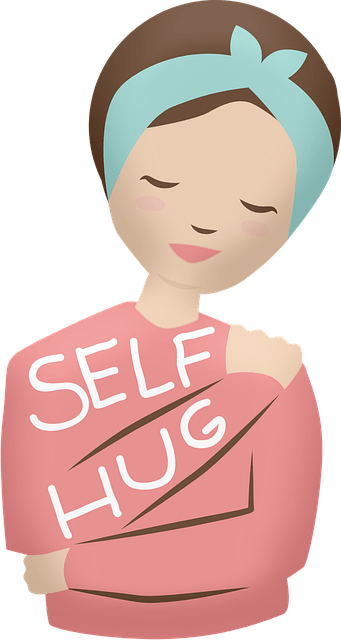
Begin with a hug...
Show yourself some love -- loosen up with the Bear Hug stretch:
Start your pre-bed stretches for better sleep this way--it's simple, yet effective...
Stand up straight and open your arms wide while inhaling (Count-4.) Now exhale (Count-4) as you cross your arms--right over left--and give yourself a hug.
Now, breathe deeply while drawing your shoulders forward. Hold this stretch for 30-seconds while focusing on your breathing.
Release this stretch by inhaling as you open your arms wide.
Now, exhale and repeatthis stretch with your left arm on top.
This stretch is great for releasing tension in your upper back.
Do it anytime you feel your back tightening up. Your back will thank you...
We can all benefit from a hug--even when it's coming from our self!
Roll with it...
The next pre-bed stretch is easy to do anytime… anywhere. Head rolls are great for loosening up neck tension. Here’s how they’re done:
Seated, with your back straight, lower your chin gently toward your chest. Now slowly roll your head to the right so that your ear is over your right shoulder. Hold there for 5 seconds before gently rolling your head back to the center of your chest.
Then, slowly, roll your head to the left until your ear is over your left shoulder and hold for 5 seconds. Now, reversing direction, gently roll your head backward; in a clockwise circle, three times.
Reverse again and roll your head gently, three times in a counter-clockwise circle. Repeat these steps 1-6 times.
Do the twist...
You’ll be able to feel the difference in your abs, chest, full back and shoulders when you employ the Spinal Twist.This stretch may be done either sitting or lying down. We found numerous instructions; but these were the simplest:
Sit up straight, on the floor, with your legs straight forward and your arms behind your back. Place your hands on the floor behind you with your fingers facing away from your body.
Now place your left foot flat on the floor, outside your right knee. While inhaling, raise your right arm up. Exhale and pull your right arm down. With your right elbow on the outside of your left leg, turn your chest, head and eyes to the left. Hold this pose for approximately 1 minute while focusing your breathing.
Now, slowly bring your head first; then your chest, back to center. Repeat these movements on the other side. *See the video link below for a demonstration.
Recap--3 Good Reasons to try Pre-Bed Stretches:
- It feels good
- They will strengthen your body and brain
- You'll get better sleep
A final thought...
As we search for ways to relax and improve our sleep quality, we keep coming back to the role our emotions and personal interactions play in our overall well-being. Until next time, I’ll leave off with this quote which might just represent the best pre-bed “stretch” for sleeping better and living better…
"Today, see if you can stretch your heart and expand your love so that it touches not only those to whom you can give it easily, but also to those who need it so much."
- Aristotle
Wishing you the happiest of holidays and a perfect night's sleep tonight, and every night!
We’re on a mission to help people sleep—Check back soon for more Relaxation Tips...
Resources:
The importance of stretching - Harvard Health
Stretching 101: Benefits and Proper Technique (verywellfit.com)
Stretching Before Bed: 8 Stretches to Do at Night Before Sleep (healthline.com)

